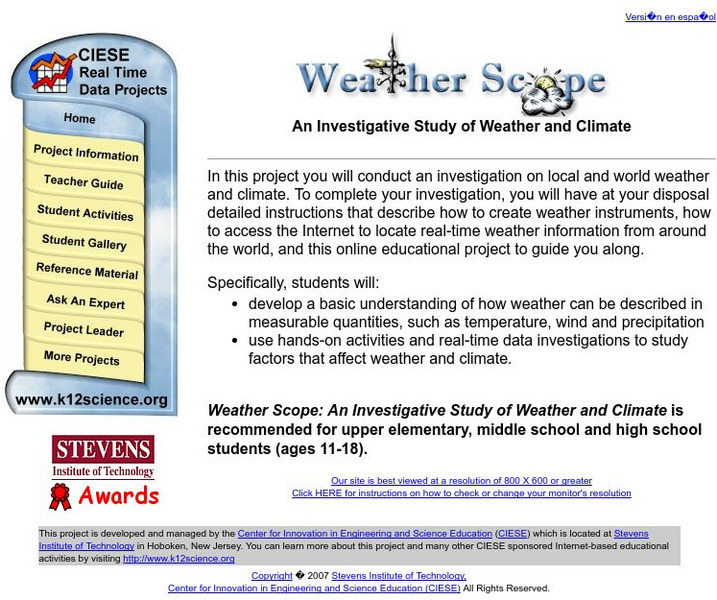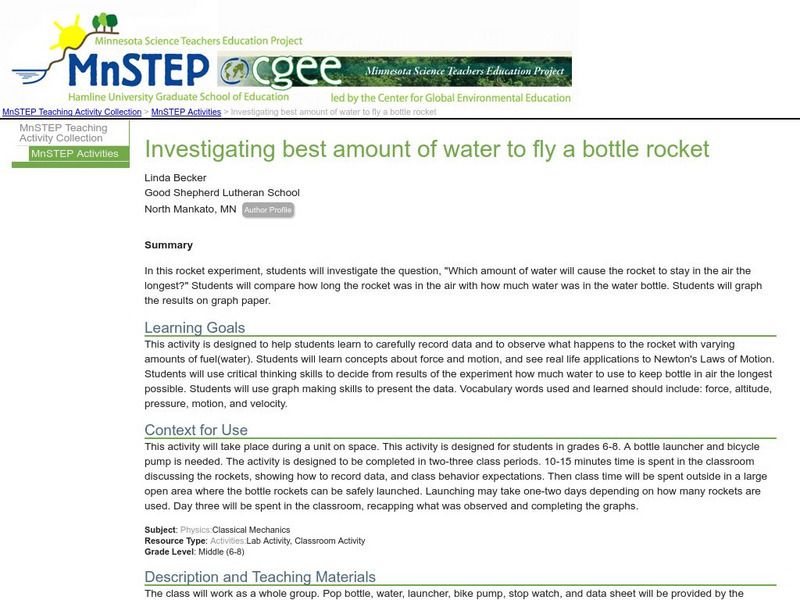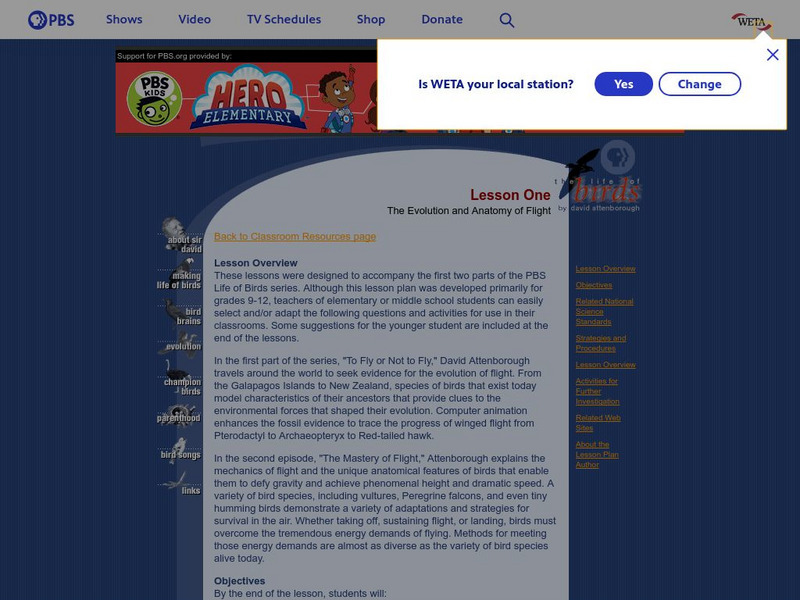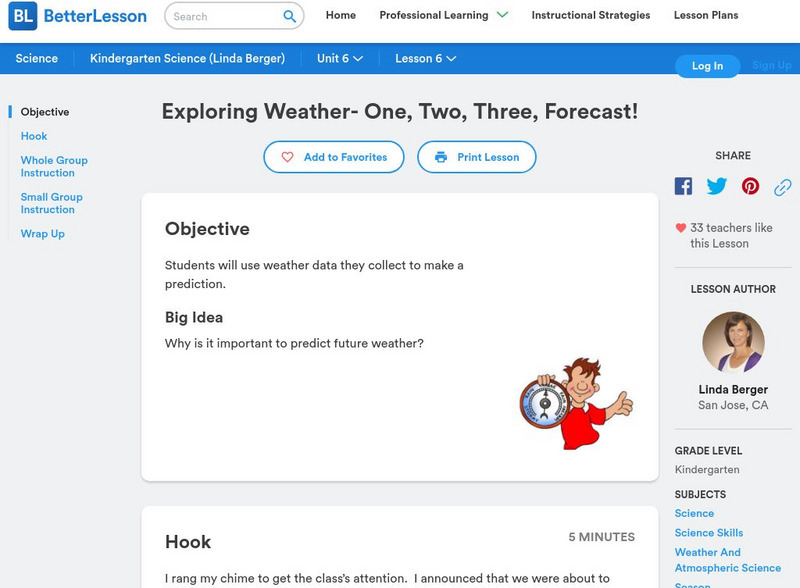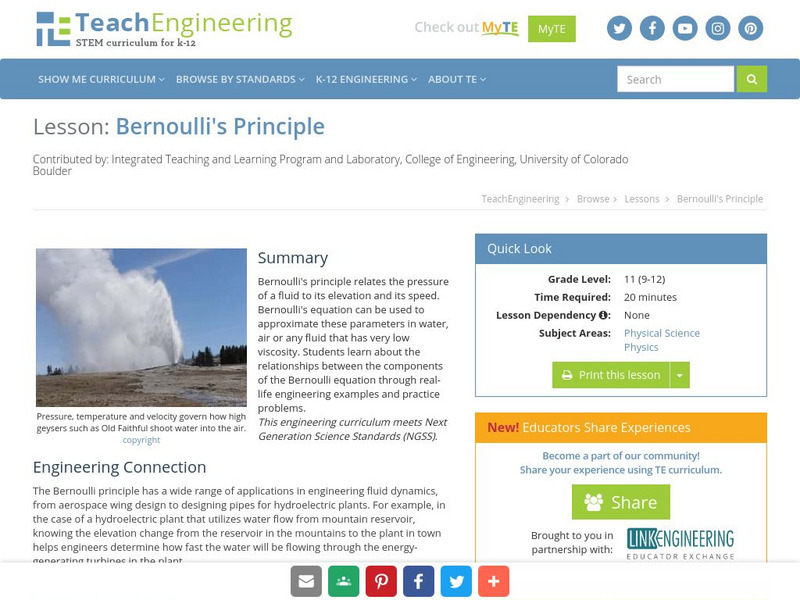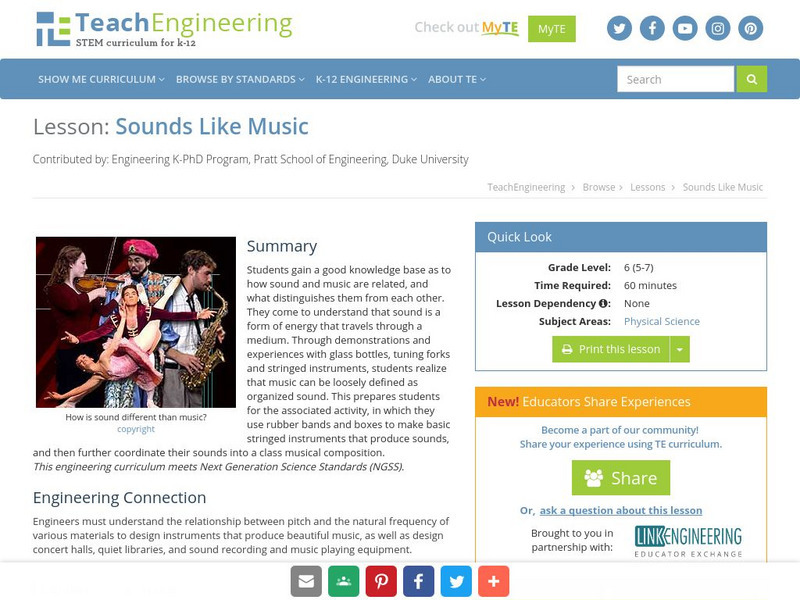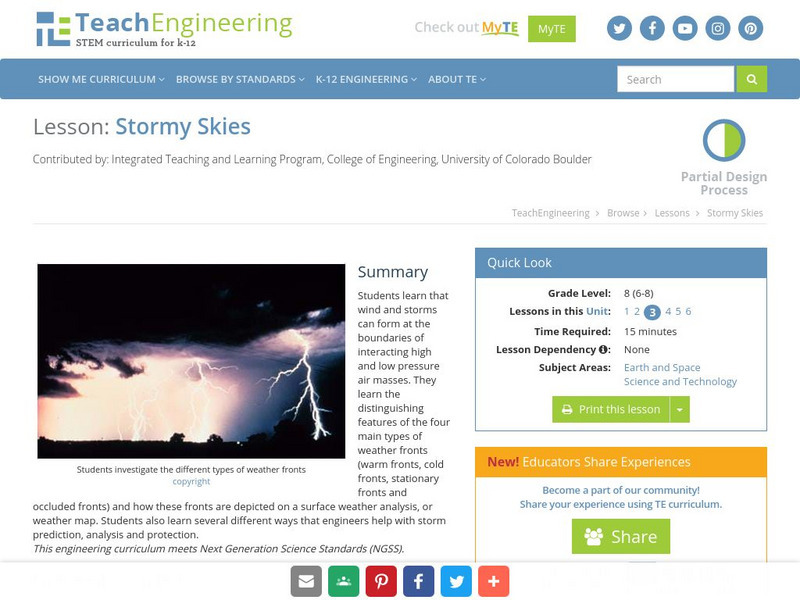TeachEngineering
Teach Engineering: Rocket Me Into Space
One of the exciting challenges for engineers is the idea of exploration. This instructional activity looks more closely at Spaceman Rohan, Spacewoman Tess, their daughter Maya, and their challenges with getting to space, setting up...
Center for Innovation in Engineering and Science Education, Stevens Institute of Technology
Ciese Real Time Data Projects: Weather Scope: A Study of Weather and Climate
Use real-time data to study factors that affect weather and climate, create weather instruments, and share data with students around the world.
Utah Education Network
Uen: What Is a Barometer?
Learn about the barometer and how it helps to predict the weather.
Utah Education Network
Uen: Measuring Wind Speed
Fourth graders measure wind speed over the course of a week and graph the results.
TeachEngineering
Teach Engineering: May the Force Be With You: Lift
Learners revisit Bernoulli's Principle (Lesson 1 of the Airplanes unit) and learn how engineers use this principle to design airplane wings. Airplane wings create lift by changing the pressure of the air around it. This is the first of...
Science Education Resource Center at Carleton College
Serc: Investigating Best Amount of Water to Fly a Bottle Rocket
In this rocket experiment, students will investigate the question, "Which amount of water will cause the rocket to stay in the air the longest?" Students will compare how long the rocket was in the air with how much water was in the...
PBS
Pbs the Life of Birds: Evolution and Anatomy of Flight
This lesson plan, designed to accompany the PBS series "Life of Birds," explores how environmental pressures influenced the evolution of wings, how natural selection resulted in the diversity of bird species, and the mechanics of bird...
Science Education Resource Center at Carleton College
Serc: Mn Step: Temperature Volume Relationship of a Gas
A lab activity where students investigate the relationship between temperature and volume using a plastic syringe with a stopper. The syringe, filled with trapped air, is placed in a hot and a cold water bath, and temperature and volume...
Science and Mathematics Initiative for Learning Enhancement (SMILE)
Smile: Lab Work: Come Fly With Me
This site by the Illinois Institute of Technology lets students use a vacuum cleaner hose, ping pong balls, straws and other materials to investigate the effect of moving air upon the surfaces which it hits. Principles are applied as...
TeachEngineering
Teach Engineering: Weather Basics
Students are introduced to the basics of the Earth's weather. Concepts include fundamental causes of common weather phenomena such as temperature changes, wind, clouds, rain and snow. The different factors that affect the weather and the...
Better Lesson
Better Lesson: Exploring Weather One, Two, Three, Forecast!
Learners will use weather data they collect to predict future weather. Included in this lesson are a weather forecasting recording sheet and an example of a student's completed work.
Discovery Education
Discovery Education: Weather Maps
This site provides a lesson plan in which groups of students will each investigate a different type of weather map use for weather forecasting. Also includes discussion questions, extension ideas, and links to additional sites for more...
TeachEngineering
Teach Engineering: Bernoulli's Principle
Bernoulli's principle relates the pressure of a fluid to its elevation and its speed. Bernoulli's equation can be used to approximate these parameters in water, air or any fluid that has very low viscosity. Students learn about the...
TeachEngineering
Teach Engineering: Sounds Like Music
Music can loosely be defined as organized sound. The lesson objectives, understanding sound is a form of energy, understanding pitch, understanding sound traveling through a medium, and being able to separate music from sound, can...
McREL International
Mc Rel: Whelmer #12 Learning Activity: Bernoulli Cans
An easy to do activity that investigates Bernoulli's principle. The activity is presented in lesson plan format that meets NSES standards.
John F. Kennedy Center
The Kennedy Center: Lesson: Weather and Wind
Here's an engaging activity to incorporate dance into your science lessons on weather! Students study wind, and various weather patterns, then create their own dance to illustrate what they have learned. Provides links to more...
TeachEngineering
Teach Engineering: Stormy Skies
Students learn that wind and storms can form at the boundaries of interacting high and low pressure air masses. They learn the distinguishing features of the four main types of weather fronts (warm fronts, cold fronts, stationary fronts...
Other popular searches
- Air Pressure Experiment
- Air Pressure Straw
- Air Pressure and Winds
- Air Pressure & Wind
- Air Pressure Activity
- Weather Air Pressure
- Air Pressure Maps
- Air Pressure and Temperature
- Air Pressure Temperature
- Air Pressure and Barometer
- Egg Air Pressure Experiment
- Air Pressure Experiment Ball

